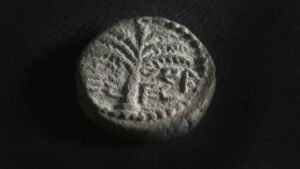Neutrinos are a bit like the Force in Star Wars. These “ghost particles” surround us and penetrate us but don’t interact with the forces that bind the galaxy together. The reason they can go through not just us but the entire planet without problem is because they are extremely light in mass and have no charge. This also makes them extremely difficult to observe and study. A physicist has a bold new proposal: let’s use Earth’s forests to detect some of them.
This might seem completely outlandish, but neutrino detectors tend to be. For example, Superkamiokande in Japan is a large hollow structure filled with purified water. The walls of the container are covered in detectors that can record the very rare interactions between a neutrino and an atom.
The IceCube Neutrino Observatory, based in Antarctica. is looking to detect similar collisions but instead of using liquid water, it uses one cubic kilometer of ice, with the detectors placed inside the ice. China is planning to build the world’s largest detector directly under the sea.
All those detectors expect to see a flash of light when the neutrino slams into an atom. The tree approach is something different. It’s based on the fact that the tau neutrino is the heavier version of these particles. When this neutrino interacts with our planet, it produces a tau particle – a heavy version of the electron. This particle decays into a shower of other charged particles and this shower emits radio waves.
Researchers interested in observing these events in the air have been using radio antennae to capture these signals. But the antennae need to be away from cities (and other human-made interferences), ideally on higher grounds like hills or slopes. Many locations with those characteristics feature trees, so building an array of antennae would require finding a place that is barren too. In a new preprint (yet to be peer-reviewed), Steven Prohira, an assistant professor in physics and astronomy at the University of Kansas, considers if we could just use the trees instead.
There is evidence – first collected at the beginning of the last century with follow-ups in the mid-to-late 1900s – that trees are pretty good radio antennas. By wrapping a coil around a tree or nailing a wire to it and then connecting it to electronics, a forest could work as a full array.
Now, there are a bunch of challenges and uncertainties surrounding turning Earth’s forests into enormous neutrino detectors. It’s not clear how well the trees fare in detecting the range of radio waves produced by these events, for a start. But if they can record the subtleties of these events that could allow us to track their origins.
There are also deployment complications. Differences in tree differences might affect performance, as might seasons if leaves affect observations. Power for the array might also be complicated to get in the middle of a forest (not with the new energy from space approach, though). Still, Prohira is confident investigating this possibility is worth it, as long as it is done in a way that doesn’t harm nature.
“Using trees as the antennas for a full-scale array has numerous benefits, including the complete removal of the need for designing and deploying antennas,” he writes. “The author urges that, should this idea be tested or implemented, the experimenters take the utmost care in protecting and maintaining the forest they instrument, and not do damage to this precious and fragile resource shared by all the creatures of the Earth. Such a detector must be built in harmony with, and with respect for, nature; otherwise, this idea is not worth trying.”
The paper is available in the preprint online repository ArXiv.
[H/T: Science News]


